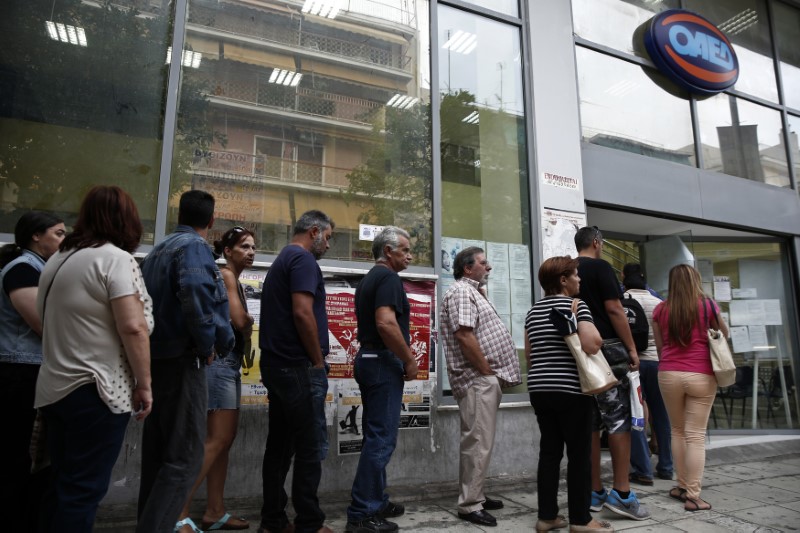 © Reuters. People wait outside a Greek Manpower Employment Organisation (OAED) office in a suburb of Athens
© Reuters. People wait outside a Greek Manpower Employment Organisation (OAED) office in a suburb of AthensBy Jeremy Gaunt
LONDON (Reuters) – It gets less attention than inflation or GDP, but the euro zone’s tumbling jobless rate has been among the highlights of the bloc’s surprisingly strong economic recovery.
From a socially destructive height of 12.1 percent in mid-2013, it is now down to a more manageable 8.8 percent.
While this may seen still high by some standards – it is around twice that of the United States, for example – as the following graphic shows, it is almost a full percentage point below the average since the euro was launched.
(Graphic: Euro zone jobless – http://reut.rs/2AJehMq)
It is also the lowest since January 2009.
Jennifer McKeown, chief European economist at Capital economics, says this should prompt a “modest” boost for wage growth.
That could help the European Central Bank in its struggle to get inflation up to target.
But there also remains a nagging concern that the 8.8 number does not capture the true level of slack in the labor market, that is the number of people who could work if they could find it.
The ECB, for example, has said slack may be twice as large when part-time workers seeking more hours or those excluded for various statistical reasons are taken into account.
There is also the issue of equality of joblessness across the 19-country bloc.
The big economies such as Germany (3.6 percent), France (9.4 percent, Italy (11.1 percent), and Spain (16.7 percent) offer widely different performances.
Indeed, as this second graphic shows, the spread between the European Union country with the highest unemployment rate – Greece at 20.6 percent in August – and the lowest – non-euro zone Czech Republic at 2.7 percent in October – is nearly 18 percentage points.
(Graphic: Euro zone jobs gap – http://reut.rs/2zQbGjH)
(Reporting and Graphics by Jeremy Gaunt; Editing by Andrew Heavens)
Fusion Media or anyone involved with Fusion Media will not accept any liability for loss or damage as a result of reliance on the information including data, quotes, charts and buy/sell signals contained within this website. Please be fully informed regarding the risks and costs associated with trading the financial markets, it is one of the riskiest investment forms possible.
Source: Investing.com





























